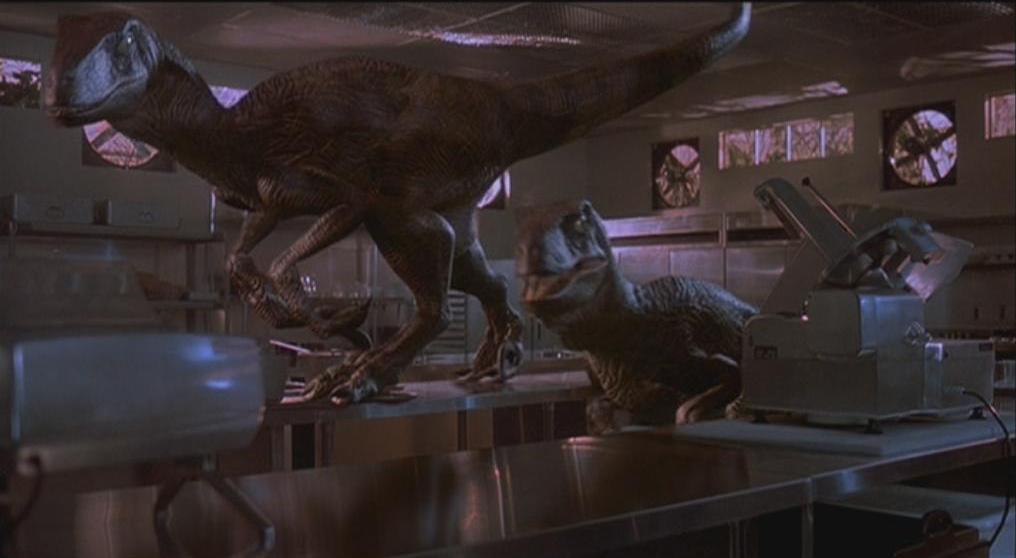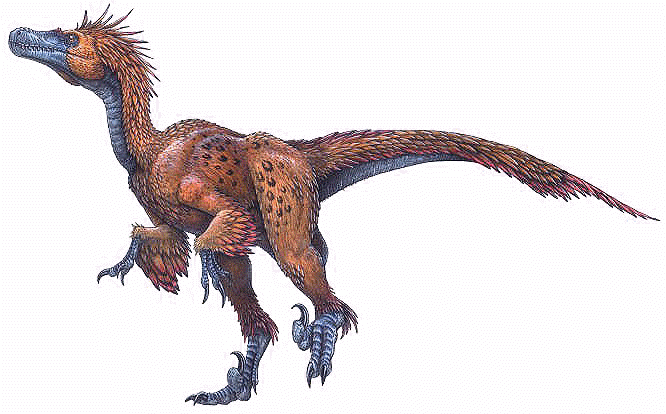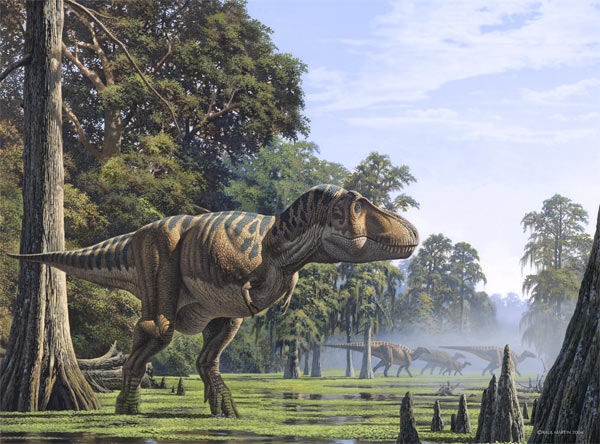
As we already know, Tyrannosaurus rex was described in 1905 by Henry Fairfield Osborn (Osborn, 1905). Since then, Tyrannosaurus rex has gone through a great deal of change. Today we will look at some other dinosaurs that have, at one time or another, been regarded as the same as Tyrannosaurus rex.
1. Dynamosaurus imperiosus
The first of these synonyms is Dynamosaurus imperiosus (Imperial Powerful Lizard). This species was also described by Osborn (1905). Osborn distinguished Dynamosaurus based on the number and shape of the teeth and by the presence of dermal plates (in other words, armour), which would have been very exciting if that were true. However, after finding more material of both Tyrannosaurus and Dynamosaurus, Osborn realised they were the same thing (Osborn, 1906). Because Tyrannosaurus and Dynamosaurus were named at the same time, Osborn had the choice of which name to use and he went with Tyrannosaurus (in some alternate reality somewhere, Dynamosaurus is the most well-known dinosaur and Tyrannosaurus would be an obscure name known only to enthusiasts). The armour plating has subsequently been discovered to have come from an Ankylosaurus (Brown, 1908) by Kenneth Carpenter (2004).
2. Tarbosaurus bataar
The next major synonym is Tarbosaurus bataar (Warrior Alarming Lizard). This species was described by the Russian palaeontologist Evgeny Maleev in 1955 (Maleev, 1955a), who originally named it as a second species of Tyrannosaurus. Maleev distinguished bataar from rex by the number of teeth and the shape of its snout. Then, in 1965, another Russian palaeontologist, Anatoly Rozhdestvensky transferred the species to the genus Tarbosaurus (which was also named by Maleev (1955b)) (Rozhdestvensky, 1965). Since then, bataar has bounced from Tyrannosaurus to Tarbosaurus. Personally, I regard it as being separate from Tyrannosaurus rex but we'll look at this in more detail another day (it gets more complicated because Maleev already had a species within Tarbosaurus, Tarbosaurus efremovi, which is probably the same as bataar but maybe not).
3. Manospondylus gigas
OK, this is where things get complicated. Manospondylus gigas (Giant Porous Vertebra) was described by Edward Cope in 1892, initially as an 'agathaumid', which for our purposes is a ceratopsid (think Triceratops, etc.) (Cope, 1892). It is known only from two backbones. John Hatcher compared the backbones (of which he could only find one) to other dinosaurs from the same time and place. He noticed that the fossil was very similar to the vertebrae found in the theropod Dryptosaurus (Marsh, 1877). This convinced Hatcher that Manospondylus was a type of theropod and not a ceratopsian (Hatcher, 1907). Then, ten years later, Osborn made the observation that Cope's description and drawings of the specimen (which by this point had completely vanished) matched very well with Tyrannosaurus. However, due to the obscure nature of Manospondylus, Osborn refrained from synonymising the two. Then, nothing was heard about it until 2000 when new tyrannosaur material was discovered at Sioux Falls, South Dakota, the apparent locality where the Manospondylus fossils were discovered (the actual location is not known because Cope didn't include that information in his description but he did tell Hatcher about it before he wrote his paper). This new material included not only the dorsal vertebrae (backbones) but also ribs, jaw bones and parts of the skull. This material matched that of Manospondylus and also Tyrannosaurus (Anonymous, 2000). If this is accepted then we have a problem. Manospondylus predates Tyrannosaurus and therefore, technically, is the correct name. However, there is a rule within the ICZN (the list of conventions regarding animal names) that states that if the older name was published before 1899 and has not been regarded as a valid name in the 50 years after its original description in at least 25 publications by at least 10 authors, then the older name can be suppressed in favour of the younger name (Ride, 1999). Since Manospondylus fits this, as the only authors to mention it have been Hatcher and Osborn, Tyrannosaurus is safe for now (so long as the rules don't change).
4. Tyrannosaurus lancensis
Oh this guy. Tyrannosaurus lancensis (Tyrant Lizard from Lance), or Lance as I call him, has been, and continues to be, a headache. No-one can agree on what the specimen constitutes. It was originally described as a species of Gorgosaurus (Lambe, 1914) by Charles Gilmore (Gilmore, 1946). When Dale Russell synonymised Gorgosaurus with Albertosaurus (Osborn, 1905) he transferred lancensis over (Russell, 1970). Then in 1988, Robert Bakker, Michael Williams and Phil Currie gave Lance a new generic name: Nanotyrannus (Dwarf Tyrant) (Bakker et al., 1988). It was then considered a juvenile Tyrannosaurus rex by Thomas Carr (Carr, 1999). However, Currie still maintains lancensis is a distinct species from rex (though he is not sure if should be in a separate genus anymore) (Currie, 2003). So we now have three choices: regard it as being a juvenile Tyrannosaurus rex, a distinct species within Tyrannosaurus as Tyrannosaurus lancensis (which is what I have gone for) or treat it as a separate genus Nanotyrannus lancensis. Bakker, Currie and Greg Larson are supposedly working on a paper that will help to clarify the situation but as nothing has been heard about it since 2005 I suspect they've given up on it. Expect to hear more from Lance in the future.
5. Albertosaurus megagracilis
I don't know much about this one. The skeleton the species is based on, LACM 23845, was discovered in the Hell Creek Formation of Montana in 1967. It was initially believed to be a juvenile Tyrannosaurus rex. Then, in 1980, Ralph Molnar described the specimen as an individual of Albertosaurus lancensis (see above) (Molnar, 1980). Gregory Paul disagreed and named it as new species Albertosaurus "megagracilis" (Great Gracile Alberta Lizard) (Paul, 1988) (He only named it - he provided no description or any reason as to why it should be a distinct species - but palaeontologists still used the name). George Olshevsky placed the species in a new genus Dinotyrannus (Terrible Tyrant) (Olshevsky, 1995), using much of Molnar's original description. Finally, in 2004, Thomas Carr and Thomas Williamson re-examined the specimen and realised that Molnar had got a lot wrong, such as not recognising some features as being the result of damage, other features being entirely absent and misidentifying some bones. In their opinion, Dinotyrannus megagracilis was just a subadult Tyrannosaurus rex (Carr and Williamson, 2004) and everyone has agreed since.
6. Aublysodon molnari
This species has a similar story to megagracilis. The specimen, know as the Jordan Theropod was discovered in 1966 in the Hell Creek Formation of Montana and comprised a partial theropod snout. This was described by Ralph Molnar who thought it was a dromaeosaurid ("raptor") (Molnar, 1978). Next, Phil Currie disagreed and believed it was actually a tyrannosaur, probably within the genus Aublysodon (Backwards-Flowing Tooth) (Leidy, 1868, Currie, 1987). Gregory Paul went one step further and named it as a new species Aublysodon molnari (Molnar's Backwards-Flowing Tooth) (Paul, 1988) (Actually, he initially misspelled it as molnaris but he later corrected it (Paul, 1990)). However, Molnar and Kenneth Carpenter disagreed, instead believing it to be a specimen of Aublysodon mirandus (Leidy, 1868) because the teeth of the two species were identical (Molnar and Carpenter, 1989). Then George Olshevsky gave it its own generic name Stygivenator (Styx Hunter - the Styx was a river in the Greek Underworld and is a reference to the Hell Creek Formation) (Olshevsky, 1995). Stygivenator was said to be unique based on the narrowness of the snout and teeth. And everything was fine and dandy...but not for long! The two Toms (Carr and Williamson) were doubtful about its uniqueness and noted that it was very similar to a number of juvenile tyrannosaurs (Carr and Williamson, 2000). Then, another Tom, Thomas Holtz, regarded Stygivenator as being a close relative of another obscure tyrannosaur Alectrosaurus (Unmarried Lizard) (Gilmore, 1933, Holtz, 2001). Unfortunately, Alectrosaurus at that time was actually a chimaera, being composed of at least two different tyrannosaurs so this should be taken with a pinch of salt. Finally, Carr and Williamson (2004) showed that most of the unique characters of Stygivenator were either wrong or not unique, and that it in fact represented a juvenile Tyrannosaurus rex. Others have since agreed with that except Olshevsky.
7. Aublysodon amplus and Aublysodon cristatus
These two species were both described by Othniel Marsh in 1892 from the Lance Formation of Wyoming. Aublysodon amplus (Ample Backwards-Flowing Tooth) was based on teeth that had small serrations on their edges with narrow ridges at the rear. Aublysodon cristatus (Crested Backwards-Flowing Tooth) is also based on teeth which have no serrations and a sharp ridge at the rear (Marsh, 1892). Their small size and little to no serrations prompted Phil Currie to identify them as being juvenile tyrannosaur teeth (Currie, 2003) but juveniles of which tyrannosaur is the big question. Based on time and place they most likely belong to Tyrannosaurus rex but they are also indistinguishable from Daspletosaurus (Frightful Lizard) (Russell, 1970) and so their identity will remain unresolved.
And those are the all the synonyms of Tyrannosaurus rex. Next time will be the final part (I promise) looking at the biology of rex such as sexual dimorphism, posture, the role of the short arms etc. The next blog post, however, will take a brief look at the Mesozoic Era - the Age of the Dinosaurs.
References
Anonymous (2000), 'New Discovery may endanger T-Rex's name' [Online], url:
http://www.iol.co.za/scitech/technology/new-discovery-may-endanger-t-rex-s-name-1.40212#.UlLJ29KbNHU, Accessed on: 07/09/2013
Bakker, R., Williams, M., and Currie, P. (1988) '
Nanotyrannus, a new genus of pygmy tyrannosaur, from the latest Cretaceous of Montana', Hunteria, 1 (15), pp. 1-30
Brown, B. (1908) 'The Ankylosauridae, a new family of armored dinosaurs from the Upper Cretaceous',
Bulletin of the American Museum of Natural History, 24, pp. 187-201
Carpenter, K. (2004) '
Redescription of Ankylosaurus magniventris Brown 1908 (Ankylosauridae) from the Upper Cretaceous of the Western Interior of North America', Canadian Journal of Earth Science, 41, pp. 961-986
Carr, T. (1999) '
Craniofacial ontogeny in Tyrannosauridae (Dinosauria, Theropoda)', Journal of Vertebrate Paleontology, 19, pp. 497-520
Carr, T. and Williamson, T. (2000) 'A review of Trannosauridae (Dinosauria: Coelurosauria) from New Mexico' in Lucas, S. and Heckert, A. (Eds) 'Dinosaurs of New Mexico', Bulletin of the New Mexico Museum of Natural History, 17, pp. 113-146
Carr, T. and Williamson, T. (2004) 'Diversity of late Maastrichtian Tyrannosauridae (Dinosauria: Theropoda) from western North America', Zoological Journal of the Linnean Society, 142, pp. 479-523
Cope, E. (1892) 'Fourth note on the Dinosauria of the Laramie',
American Naturalist, 26, pp. 756-758
Currie, P. (1987) '
Theropods of the Judith River Formation of Dinosaur Provincial Park', in Currie, P. and Koster, E. (Eds) Fourth Symposium on Mesozoic Terrestrial Ecosystems, Drumheller: Royal Tyrell Museum of Palaeontology
Currie, P. (2003) '
Cranial anatomy of tyrannosaurid dinosaurs from the Late Cretaceous of Alberta, Canada', Acta Palaeontologica Polonica, 48 (2), pp. 191-226
Gilmore, C. (1933) 'On the dinosaurian fauna of the Iren Dabasu Formation' Bulletin of the American Museum of Natural History, 67, pp. 23-78
Gilmore, C. (1946) 'A new carnivorous dinosaur from the Lance Formation of Montana',
Smithsonian Miscellaneous Collections, 106, pp. 1-19
Hatcher, J (1907) 'The Ceratopsia',
U.S. Geological Society Monograph, 49, pp. 1-300
Holtz, T. (2001) '
Pedigree of the tyrant kings: New information on the origin and evolution of the Tyrannosauridae', Journal of Vertebrate Paleontology, 21 (3), pp. 62A-63A
Lambe, L. (1914) 'On a new genus and species of carnivorous dinosaur from the Belly River Formation of Alberta, with a description of the skull of
Stephanosaurus marginatus from the same horizon',
Ottawa Naturalist, 28, pp. 13-20
Leidy, J. (1868) '
Remarks on a jaw fragment of Megalosaurus', Proceedings of the Academy of Natural Sciences of Philadelphia, 20, pp. 197-200
Maleev, E. (1955a) 'Gigantic carnivorous dinosaurs of Mongolia',
Doklady, Academy of Sciences, 104 (4), pp. 634-637
Maleev, E. (1955b) 'New carnivorous dinosaurs from the Upper Cretaceous of Mongolia], 104 (5), pp. 779-782
Marsh, O. (1877) 'Notice of some new dinosaurian reptiles from the Jurassic Formation',
American Journal of Science, 3 (14), pp. 514-516
Marsh, O. (1892) '
Notes on Mesozoic vertebrate fossils', American Journal of Science, 44, pp. 756-758
Molnar, R. (1978) '
A new theropod Dinosaur from the Upper Cretaceous of Central Montana', Journal of Paleontology, 52 (1), pp. 73-82
Molnar, R. (1980) '
An albertosaur from the Hell Creek Formation of Montana' Journal of Paleontology, 54, pp. 102-108
Molnar, R. and Carpenter, K. (1989) 'The Jordan theropod (Maastrichtian, Montana, U.S.A.) referred to the genus Aublysodon', Geobios, 22, pp. 445-454
Olshevsky, G. (1995) '
The origin and evolution of the tyrannosaurids', Dinosaur Frontline, 9, pp. 92-119 and 10, pp. 75-99
Osborn, H. (1905) 'Tyrannosaurus and other Cretaceous carnivorous dinosaurs', Bulletin of the American Museum of Natural History, 21, pp. 259-265
Osborn, H. (1906) 'Tyrannosaurus, Upper Cretaceous carnivorous dinosaur', Bulletin of the American Museum of Natural History, 22, pp. 281-296
Paul, G. (1988) Predatory Dinosaurs of the World: A Complete Illustrated Guide, New York: Simon and Schuster
Paul, G. (1990) 'The many Myths, some old, some new, of Dinosaurology', Modern Geology, 16, pp. 69-99
Ride, W. (1999) 'Article 23.9 - Reversal of Precedence', International Code of Zoological Nomenclature, London: ICZN
Rozhdestvensky, A. (1965) 'Growth changes in Asian dinosaurs and some problems of their taxonomy', Paleontological Journal, 3, pp. 95-109
Russell, D. (1970) 'Tyrannosaurs from the Late Cretaceous of western Canada', National Museum of Natural Science Publications in Palaeontology, 1, pp. 1-34






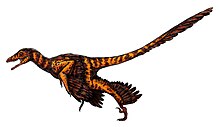

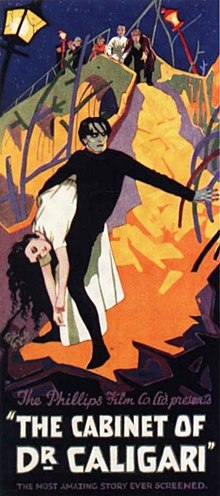






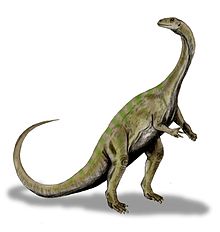




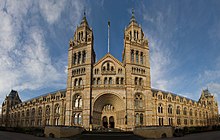


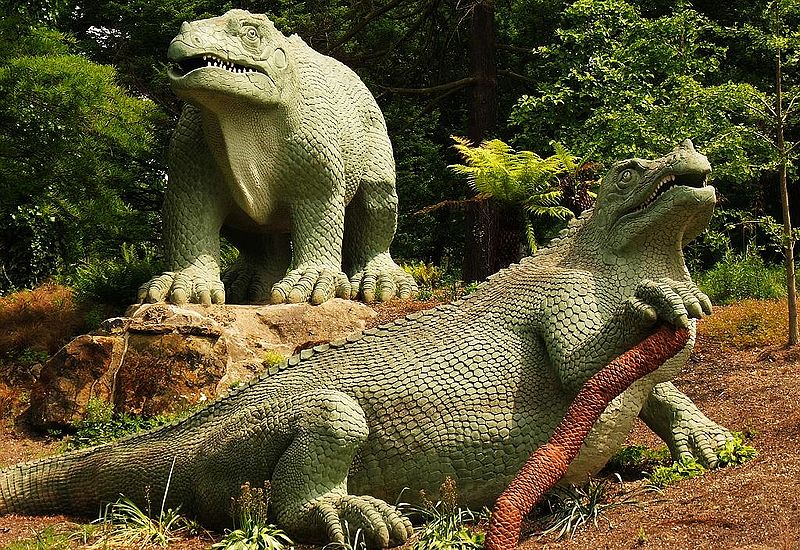



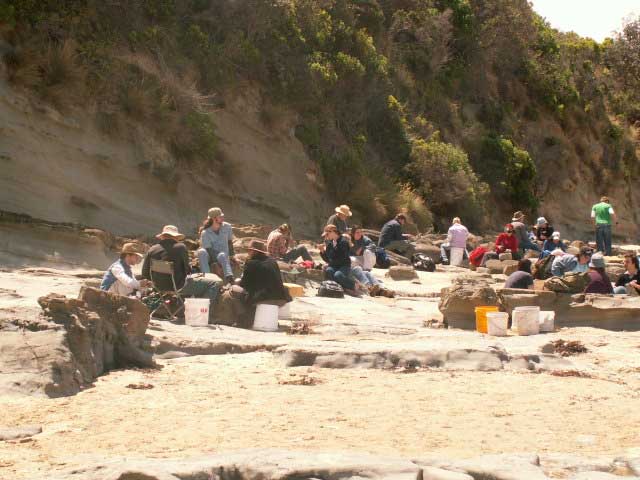

.jpg)




